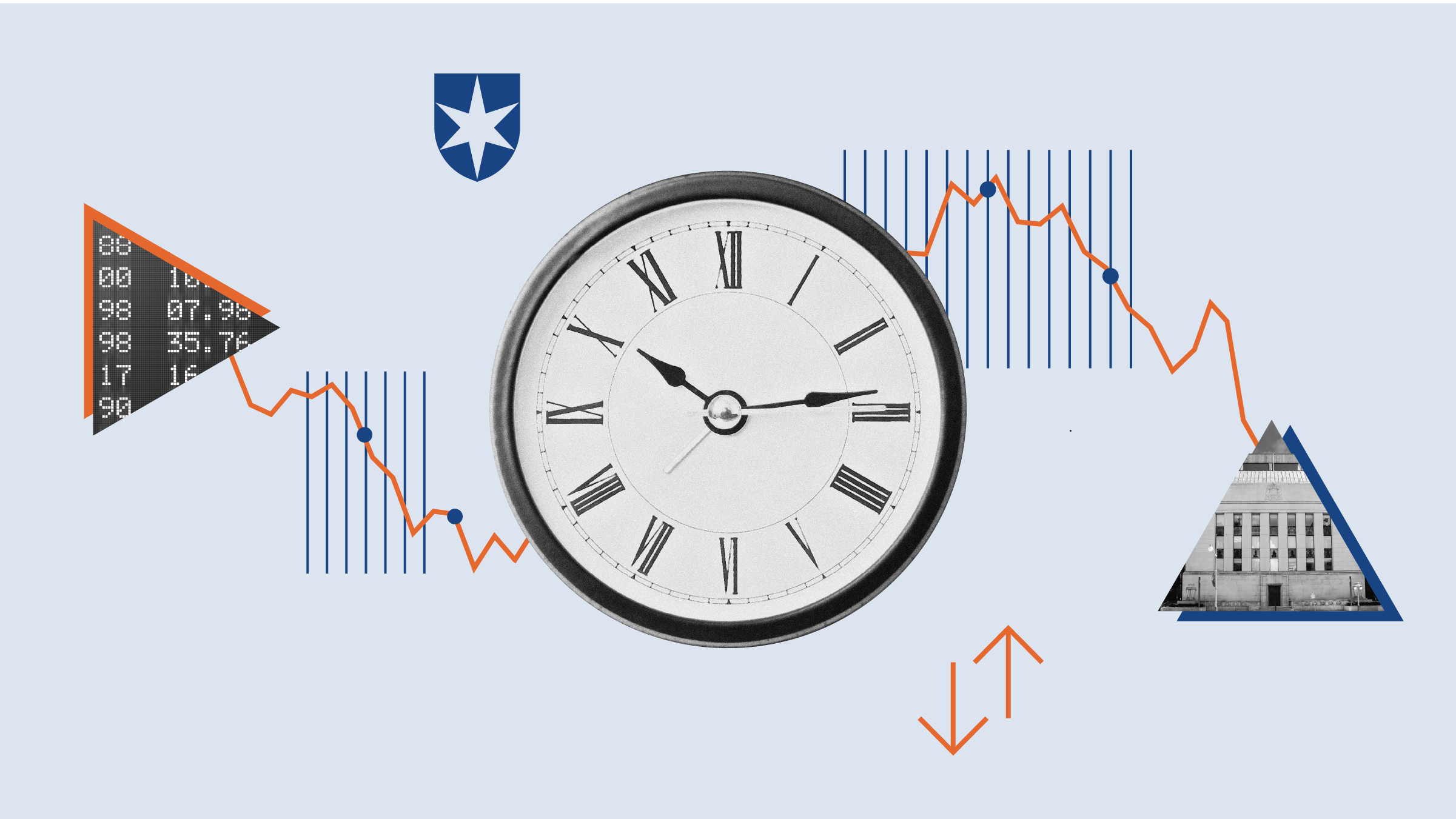Investors usually consider option-writing strategies as a means of generating income, or as an avenue for achieving equity-like returns with less risk. Neither categorization is necessarily wrong, but they overlook option-writing strategies' potential diversification benefits.
Equity index option-writing strategies can help diversify equity portfolios by adding exposure to the volatility premium. The volatility premium is the difference between an asset's implied (expected) volatility and its realized (actual) volatility over a given period. Recent research has shown that the average volatility premium measured positive 3.4% per year and was positive for 88% of the months from January 1986 to December 2014.
Loss aversion may be the behavioural bias that explains why option buyers chronically overprice call and put options on broad-based indexes such as the S&P 500. Put buyers are essentially buying insurance to limit their downside. On the other hand, call buyers are purchasing the equivalent of a lottery ticket. They pay a small premium for a potentially large gain. In both cases, option buyers are paying up to reduce their downside.
A covered call strategy, which combines a long equity position (such as an investment in an exchange-traded fund tracking the S&P 500) with a short call option, offers straightforward exposure to the volatility premium. The option buyer has the right, but not the obligation, to purchase the S&P 500 position from the option seller for a specified price until the option expires. The option seller covers their short call option with a long S&P 500 position if the option is exercised. A put-writing strategy follows a similar dynamic, but a put option gives the option buyer the right to sell the S&P 500 to the seller at a previously specified price. So instead of holding the S&P 500 as collateral, the put seller holds a cash-like position such as short-term Treasuries to purchase the S&P 500 from the option buyer if exercised. In both cases, the option seller collects a premium from the option buyer for their trouble.
The Chicago Board Options Exchange publishes data for indexes that mimic two such option-writing strategies which systematically sell call and put options on the S&P 500. The CBOE S&P 500 BuyWrite Index (BXM) mimics the investment returns of holding the S&P 500 and selling an at-the-money (the option with a strike price nearest the current index price) call option that expires in one month. The CBOE S&P 500 PutWrite Index (PUT) replicates the returns of selling an at-the-money put option each month and holding short-term Treasuries. Like most indexes, BXM and PUT ignore transaction costs and taxes. From July 1986 through December 2016, both indexes' risk-adjusted returns, as measured by their Sharpe ratios, were greater than that of the S&P 500 Total Return Index (SPTR).

Who are you calling normal?
So, these strategies offer equity-like returns with lower risk? It’s not quite that straightforward. The Sharpe ratio is an appropriate measure of risk-adjusted returns when returns are normally distributed, but option-writing strategies' returns are not normally distributed. These call- and put-writing strategies have their upside or downside exposure capped by their at-the-money option strike and collect steady option premiums to incur this risk. These strategies' returns don't look like equity returns. First, they are more negatively skewed than the S&P 500's returns. The left tail of the option-writing strategies is longer than the right tail, and the bulk of the monthly returns are on the right side of the distribution. Second, their return stream distribution curves are much steeper than the S&P 500’s, indicating that the frequency of option-writing returns is concentrated nearer the mean and is more narrowly dispersed. Exhibit 2 displays a histogram of BXM, PUT, and SPTR’s monthly return distributions from July 1986 through December 2016. The vertical axis measures the percentage of monthly returns that fall into buckets measured in 0.5% increments.
Exhibit 2: Histogram of CBOE Option Indexes and S&P 500 Monthly Returns

Both BXM and PUT’s returns generate much steeper curves. In fact, about 16% of the option-writing strategy’s monthly returns from July 1986 through December 2016 (366 months) land between 1.5% and 2.0%. SPTR's monthly returns landed in the same bucket about half as often—8% of the time. This makes sense because the average premium collected each month on the at-the-money call and put options each month has averaged around 2.0%.
Because these return distributions have longer left tails, the Sortino ratio may be a more accurate measure of risk-adjusted returns. The Sortino ratio is like the Sharpe ratio, but it only considers the downside deviation in its calculation. Exhibit 3 shows the Sortino ratios of all three indexes as well as statistics measuring the distribution of each index’s monthly returns and their similarities.

Interestingly, the Sortino measures for both the SPTR and BXM indexes are nearly identical, but PUT still stands out as having better risk-adjusted returns by this measure. This may be because BXM is still long the S&P 500, so it combines equity and volatility premiums, but the PUT index holds short-term Treasuries as collateral against its sold index put options. PUT doesn’t behave like an equity strategy because it combines the low-risk returns of short-term Treasuries with the volatility premium. BXM and PUT’s betas measure 0.63 and 0.55, respectively, with the S&P 500, which illustrates their diversification benefits.
Putting puts (and calls) into practice
![]() PowerShares S&P 500 BuyWrite (PBP) and
PowerShares S&P 500 BuyWrite (PBP) and ![]() WisdomTree CBOE S&P500 PutWrite (PUTW) are the two largest ETFs by assets that track the BXM and PUT indexes. PBP launched in December 2007 and PUTW in February 2016, so their live track records are relatively brief. Their underlying indexes’ long track records offer some comfort, but there are real-world issues to consider that the indexes don’t capture.
WisdomTree CBOE S&P500 PutWrite (PUTW) are the two largest ETFs by assets that track the BXM and PUT indexes. PBP launched in December 2007 and PUTW in February 2016, so their live track records are relatively brief. Their underlying indexes’ long track records offer some comfort, but there are real-world issues to consider that the indexes don’t capture.
First, volatility spikes can wipe out several years’ worth of the option premiums they are designed to collect. These strategies are like currency carry trades in that they earn a steady stream of returns until they don’t. Investors need to be willing and able to stick with these strategies during painful drawdowns to make them worthwhile. Second, the premium collected from selling options monthly, and the potential gains reaped from options contracts that expire in the seller’s favour, can result in taxable events, as the ETFs' in-kind creation/redemption mechanism cannot be used to purge derivatives from their portfolios. PBP has distributed capital gains in six of nine fiscal years. PUTW distributed capital gains in 2016, its first year in existence. Finally, PBP has lagged the BXM Index by 0.94% on an annualized basis since its inception, and PUTW has lagged its index by 0.50% annualized over its short life. Considering that PBP charges 0.75% and PUTW charges 0.38%, they have done a decent job matching their indexes before fees.
Often considered a means of obtaining equity exposure while keeping a lid on risk, or a manner of juicing an equity position for more income, option-writing strategies are perhaps better viewed as a potential means of diversifying equity risk. To that extent, both PBP and PUTW might be considered as alternatives for investors who wish to diversify their stock risk and harvest the volatility premium.















